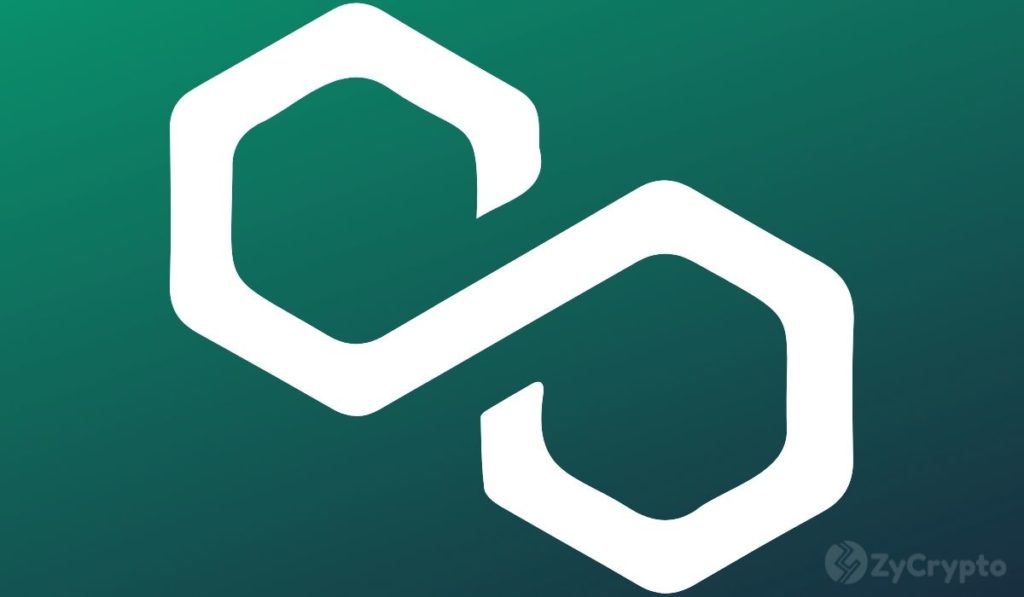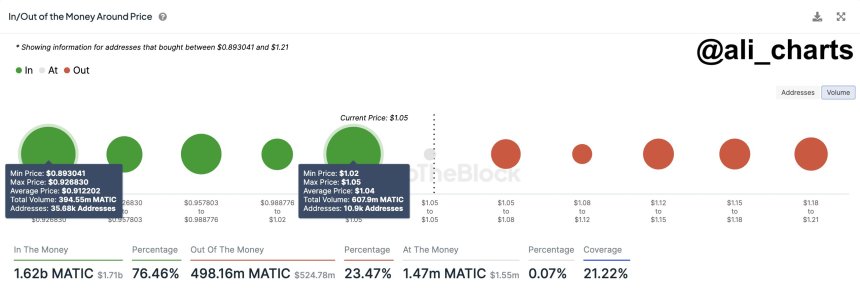2021-5-27 17:35 |
Popular Ethereum layer two scaling solution Polygon has added another milestone to its cap. Polygon said its SDK stack is now available for use on the Ethereum network in a Medium post.
Polygon SDK Is LiveThis will see developers build Ethereum-compatible blockchains easily and seamlessly. With its pluggable modules, developers can finally utilize consensus algorithms like Istanbul, Hotstuff, and leverage on the Ethereum Virtual Machine (EVM).
The multi-chain scaling solution noted that the SDK release would further establish the importance of Ethereum to the blockchain ecosystem. This will transform the protocol into a full-fledged multi-chain system like an Internet of Blockchains (IOB).
Compared to other decentralized applications (dapps) facilitators, Polygon's multi-chain Ethereum system will be similar to protocols like Polkadot (DOT) and Cosmos (ATOM) but with a few major upsides.
Developers using the Polygon SDK will be able to benefit from Ethereum’s network effects. They will also enjoy higher security as Polygon Chains will tap from the security architecture of the Ethereum network and grow further while enjoying more flexibility and power.
The Polygon SDK will support stand-alone chains – sovereign Ethereum chains in charge of their security for a start. Later on, it plans to include layer two solutions or secured chains like Optimistic rollups, zkrollups, Validium, and Plasma.
Commenting on the new development, Polygon co-founder Sandeep Nilwal noted that the layer two protocol is fixated on ensuring the multi-chain future of Ethereum.
According to him, Polygon’s SDK deployment is targeted at solving the pressing needs for Ethereum’s multi-chain future, including ease of deployment and inter-layer two communication.
Polygon is not done yet with its SDK deployment. The protocol plans to launch more consensus algorithms, enabling inter-chain or bridging modules, plugin systems, and enterprise modules for businesses later on.
Polygon Outshines All Layer 2 ProtocolsThe boom in decentralized finance (DeFi) has served as a wake-up call for the Ethereum network, given its slow march to a PoS consensus algorithm. Ethereum, which currently shares a proof-of-work (PoW) mining protocol with Bitcoin, has seen its gas fees shoot up and experienced slower transaction validation time due to network congestion.
Layer two scaling solutions like Polygon have retained the relevance of the Ethereum network as more developers have sought alternatives in building dapps.
Polygon, one of a multitude of scaling solutions, has quickly separated itself from the crowd, and its token price has been a reflection.
Polygon's steady growth seems to have caught the eyes of billionaire Mark Cuban, as the Dallas Mavericks owner recently invested in the company. The company announced this feat in a tweet yesterday as Cuban also added Polygon to his website, further confirming his investment in the project.
After a run-up in price due to the news, it hit a 24-hour peak at $2.30. At press time, Polygon's MATIC is trading for $2.14.
Polygon/USD MATICUSD 2.0905 -$0.03 -1.66% Volume 5.69 b Change -$0.03 Open$2.0905 Circulating 6.21 b Market Cap 12.99 b baseUrl = "https://widgets.cryptocompare.com/"; var scripts = document.getElementsByTagName("script"); var embedder = scripts[scripts.length - 1]; var cccTheme = {"Chart": {"fillColor": "rgba(248,155,35,0.2)", "borderColor": "#F89B23"}}; (function () { var appName = encodeURIComponent(window.location.hostname); if (appName == "") { appName = "local"; } var s = document.createElement("script"); s.type = "text/javascript"; s.async = true; var theUrl = baseUrl + 'serve/v1/coin/chart?fsym=MATIC&tsym=USD'; s.src = theUrl + (theUrl.indexOf("?") >= 0 ? "&" : "?") + "app=" + appName; embedder.parentNode.appendChild(s); })(); var single_widget_subscription = single_widget_subscription || []; single_widget_subscription.push("5~CCCAGG~MATIC~USD"); The post Ethereum Layer 2 Solution Polygon Launches SDK to Transform Ethereum Into An Internet of Blockchains first appeared on BitcoinExchangeGuide. origin »Ethereum (ETH) на Currencies.ru
|
|













